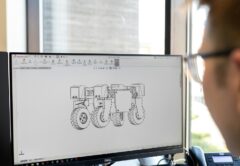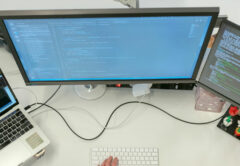Our society advances through the industries of science, technology, engineering, and math, but there are just not enough employees to meet the demand for these roles. The need for more creative professionals in society can only be met by obtaining the right education, which engages students and also provides them with an interactive learning environment.
Basic knowledge and abilities are required to successfully incorporate robotics and 3D printing into STEM education, with the opportunity to learn how to develop, implement, and evaluate STEM education in classrooms. The pressure this change causes is felt by both teachers and pupils. Students are under more pressure than ever to understand STEM subjects in greater depth and breadth rapidly, while teachers are pressured to fully and immersively communicate complex ideas in less time. Due to the financial crisis, there is a demand for new innovations in education that would facilitate teachers’ efforts to teach pupils how to innovate.
Reliance on theory and a lack of practical experience are two commonly acknowledged shortcomings of STEM education. We must develop a comprehensive approach to student learning in order to mitigate this. They will employ technical tools, equipment, and procedures in inventive ways to address design difficulties while working as a team and independently throughout the sessions, cultivating an engaged mindset for authentic material and hands-on STEM activities.
The abstract becomes concrete thanks to 3D internet technology and virtual learning. STEM concepts come to life through three-dimensional visualization, making theoretical principles like gravity and the Big Bang Theory into explorable experiences. This is the major factor that educational institutions focus on to improve and enhance learning.
Students can enter 3D interactive settings based on STEM concepts through virtual learning. It immerses pupils in their fields of study. The STEM conduit, on the other hand, is 3D-based learning; it acts as a link between the student’s “concrete” environment and the powerfully abstract realm of STEM concepts. It provides context for pupils to create mental models and comprehend STEM concepts.
Understanding is deepened through conceptual learning, which also fosters creativity, leadership, creative self-efficacy, energy, risk-taking tendency, and ambiguous problem-solving. All of this is triggered through practical application and hands-on learning in a setting where errors are easily corrected and curiosity serves as the main driver.
The layered, immersive learning environment’s conceptual and exploratory nature aids pupils in learning information twice as quickly. The 3D simulations give teachers the tools they need to help students learn more deeply and in more nuanced, practical ways about complicated ideas. Each session is now an interesting excursion rather than a dry lecture.
Businesses like ours have now extended this global learning and other best practices to India for school pupils studying science and maths. As a result, the entire class learns more deeply and effectively, increasing each student’s proficiency in the six elements of innovation competency that will help them become innovators of the future.












